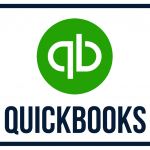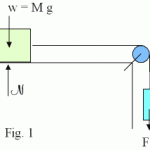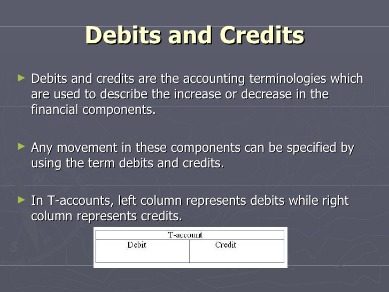
You then create a foundation of trust and stability in the employer-employee relationship. Need an accountant who specializes in medical practices, oil and gas, small business and more? Avoiding this ecommerce accountant involves adequate financial planning and this cannot be done effectively without the help of a professional accountant. It is also the amount you owe a third party to whom you must send such money.
Types of Payroll Journal Entries
Learn more about our full process and see who our partners are here. The highest payroll liability balance should be for employee take-home pay. As with any type of liability, you must pay your payroll liabilities to the appropriate recipients.
How To Do Payroll Accounting Effectively
- For hourly employees, all you need to do is multiply the number of hours worked and the employee’s hourly rate.
- If you provide your employees with paid time off (PTO) or any other types of leave, that is also a payroll liability you also need to consider.
- Our editorial team independently evaluates and recommends products and services based on their research and expertise.
Total federal and state unemployment taxes vary and depend on each state’s unemployment program. Calculate gross wages from an annual salary or hourly pay rate and hours worked. The gross wages you pay employees may be your largest payroll expense. Employers don’t match income tax deductions, but they pay federal unemployment taxes.

How to track payroll liabilities

Payroll liabilities include tax withholdings, benefit deductions, retirement contributions and union dues. You must calculate each liability accurately and send it to the proper authority. After you take all payroll deductions from your employees’ gross pay, they receive their net pay. Net pay is the actual dollar amount your employees receive for their work. Payroll liabilities are costs that are incurred when an employer hires workers to perform work.
In addition to financial savings, internal payroll systems help companies keep confidential financial information private. However, software programs can be time-consuming, which can pose a problem for small companies with few staff. Understanding and complying with them is crucial to avoid penalties and legal issues. Paid time off equates to vacation time, sick days, and holidays off from work. Businesses typically set aside funds for PTO liabilities to cover the hours employees take off while still receiving their regular pay.
Track and manage time

Some employees are exempt from the FLSA, and the Act does not apply to independent contractors or volunteers because they are not considered employees. Employers with gross sales of $500,000 or more per year are subject to the requirements of the Fair Labor Standards Act (FLSA) passed in 1938. This is a U.S. law that protects workers from certain unfair pay practices. The FLSA sets out various labor regulations, including minimum wages, requirements for overtime pay, and limitations on child labor. For example, FLSA rules specify when workers are considered on the clock and when they should be paid overtime. Firstly, it ensures compliance with tax regulations and labor laws.
Prior to paying them, those unpaid wages are liabilities because you owe them to your workers. The accrual method posts payroll liabilities and expenses in the same period. In the restaurant example, a $3,000 wage expense and a $3,000 wage liability balance are posted on March 31. When cash is paid on April 5, the liability balance is reduced.
Most of the time, payroll liabilities last just a few days or weeks. Another way to track your liabilities is to use payroll accounting. Payroll accounting gives you a clear record of your liabilities, including wages and taxes.
We are the trusted, independent resource for businesses of all sizes to explore, initiate, and embed outsourcing into their operations. Payroll liabilities are a multifaceted aspect of running a business, requiring attention to detail, accuracy, and a proactive approach. A smooth-functioning payroll system instills confidence in your workforce.
If you have staff working in various countries, tracking liabilities can be even more complicated. In this case, you can turn to a global payroll solution provider, like Omnipresent, to manage all aspects of your payroll process, including tracking liabilities. This helps you easily navigate varying local requirements and regulations. This guide is intended to be used as a starting point in analyzing an employer’s payroll liabilities and is not a comprehensive resource of requirements. “It’s not a one-size-fits-all,” Bucholtz explained about the various state dormancy periods. I have the steps to help you pay those payroll liabilities and remove the from the balance sheet.
The benefits you offer, your industry, and other factors affect which accounts you need to record payroll. If you use an accountant, payroll software or professional employer organization (PEO) to manage payroll, these costs will also be added to your payroll liabilities. The most apparent liability when you run payroll is employee wages. Employees can receive pay daily, weekly, twice a month or on any other agreed-upon schedule. Before payroll is processed, the unpaid wages are liabilities, since you owe money to your employees for work they’ve already completed.
Payroll liabilities are payroll expenses a business owes but has not paid. Obligations may include employee compensation, withholdings and expenses such as the employer’s share of FICA taxes (Social Security and Medicare taxes). Payroll liabilities are https://www.business-accounting.net/how-to-read-understand-a-cash-flow-statement/ an important component of the cost of running a business. They consist of taxes, benefits and employee wages paid in advance. Employers need to know how much they need to pay for these when hiring employees in order to maintain profitability over time.
It’s important to choose a quality accounting program that will make documenting transactions easier. You’ll thank yourself when an audit arises or you just need to prepare an income or cash flow statement at year-end. https://www.intuit-payroll.org/ Most companies do it at least monthly and definitely at year-end. The accrued payroll account houses any net payroll amounts (payable to employees) that have been expensed but have not yet been paid.
